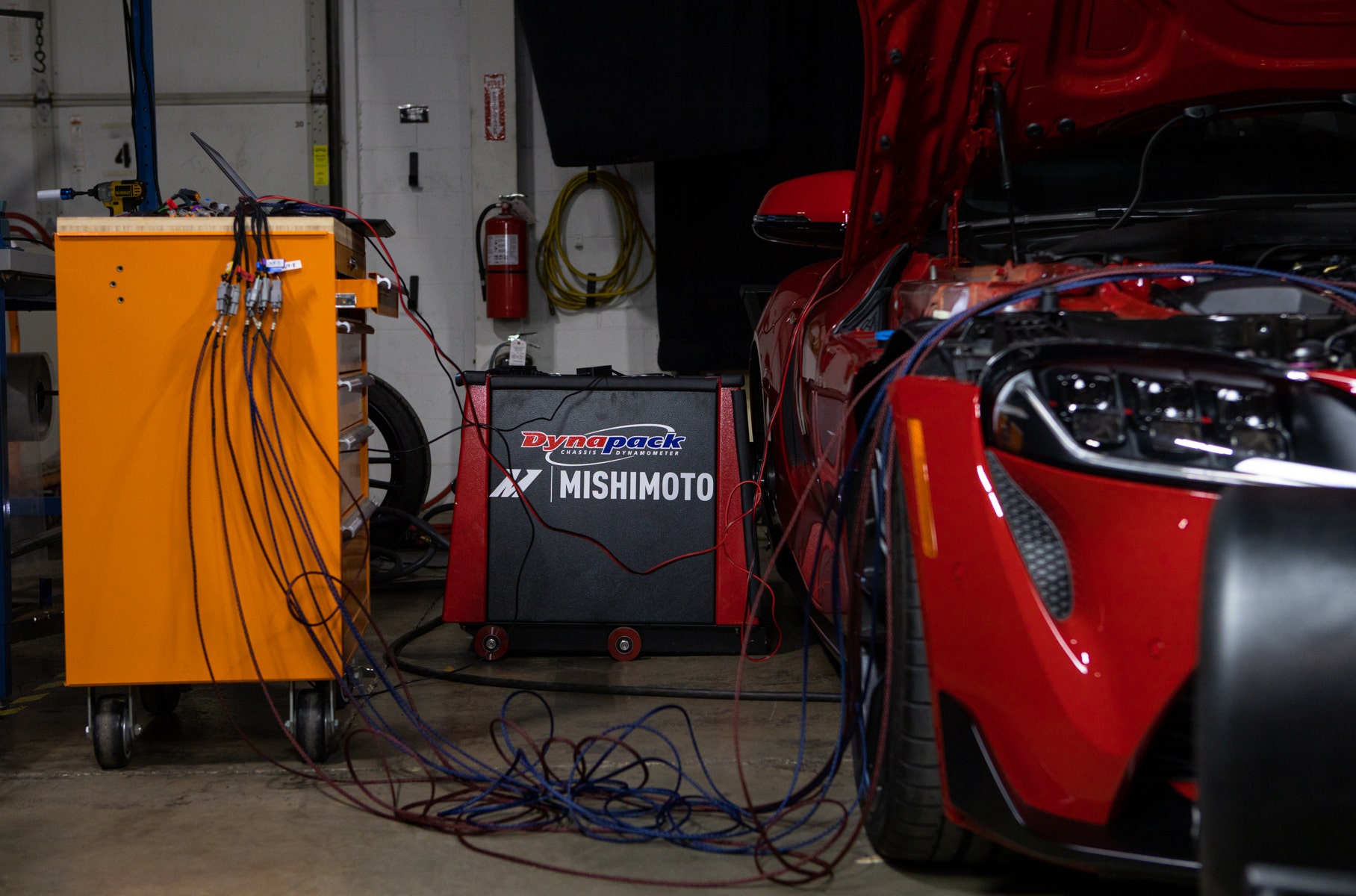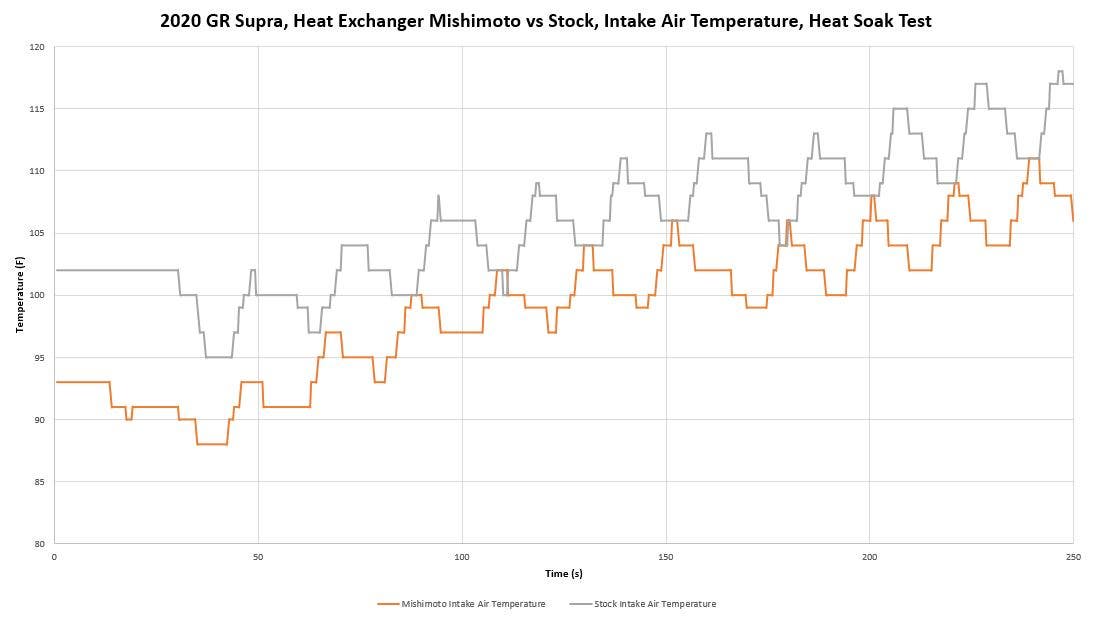
Cool Integration - Performance Heat Exchanger R&D, Part 4 - Testing Results
PERFORMANCE HEAT EXCHANGER, FITS TOYOTA GR SUPRA 3.0L, 2020+
The GR Supra is a showoff. This is not news. No one is going out to buy one of Toyota's most revered sports cars because they're looking for something sensible. Nope, they're looking for a shouty straight-six, all wrapped in a sleek, low-riding 2-seater body. They're likely looking to turn the A90 into their next mod-machine as well. If you've been following our R&D, you'll already know that our new heat exchanger design, on paper, is also quite the showoff. If you don't already know that aspect, make sure to head back to our last post, which outlines the new design features.
What we want to know now is, sure, our heat exchanger can talk the talk, but can it walk the walk? To find out, we arranged a torture test that allows us to record the air-to-water intercooler system's performance under the harshest conditions.

Our heat soak test is performed on our Dyna Pack system. The test consists of a series of 6 consecutive power-pulls without a cool-down period in between. The purpose of this procedure is to allow heat to soak into the heat exchanger. This method serves as a simulation of extreme driving conditions, and it will enable us to examine the heat dissipation properties under duress between the stock unit and our design. Sensors were placed throughout the various systems to monitor specifically coolant, along with intake air temperatures.

With the testing complete, our data review showed an average reduction in the global intercooler coolant temperatures. You can see that with our heat exchanger installed, both the inlet and outlet temperatures trend lower than the stock unit. As a refresher, the intercooler under the hood of the A90 Supra is an air-to-water system, meaning that it utilizes a separate coolant system to transfer heat from the intake air. So, by lowering the average coolant temperature in that system, we would expect to see a reduction in the intake air temperatures.

Expectations met. With our heat exchanger installed and coolant temperature dropped, the intercooler was able to pull more heat from the charged air. Specifically, we noted a 7°F drop from our intake manifold mounted sensor. When it comes to adding power to any vehicle, every bit counts. A 7°F drop in intake temperatures might sound like a marginal gain, but cooler air is denser. The more cool and dense the air is, even by a few degrees, the more power that's crammed into the engine. Not to mention that improvements in intake air temperatures are vital when also incorporating bigger turbos or tunes with your build.

With the testing complete and the data compiled, we have scientifically determined that our heat exchanger can, in fact, walk the walk. Reducing the average global intercooler temperatures with a heat exchanger makes for a more efficiently performing intercooler, resulting in a much more eager B58-powered Supra.

Get yours today:
PERFORMANCE HEAT EXCHANGER, FITS TOYOTA GR SUPRA 3.0L, 2020+

Thanks for Reading!
-Nick




